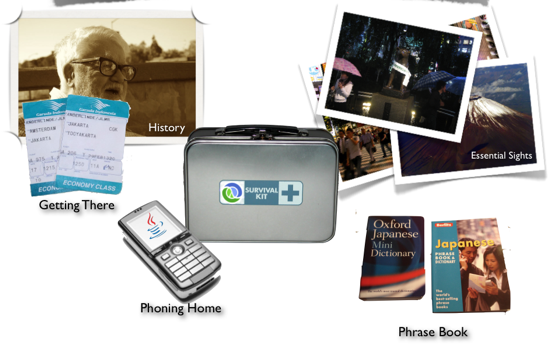A Java Sightseer's Guide to Clojure
Although I’ve been fairly quiet on the posting front, I did do a bit of Clojure evangelising to my local Java User’s Group last Wednesday.
Because it was a Java group and I didn’t want to be burned as a language heretic, my talk focused on Clojure’s interoperability with Java and walked through a side-by-side translation of Clojure and Java code. To ease the culture shock of visiting a very different style of programming, I had fun framing my talk as a sightseer’s guide. As a taste, this was the overview slide:

The overview slide from my CJUG talk on Clojure.
I covered a bit of Clojure’s background in “History” before talking about installing Clojure on the command line and as an Eclipse plug-in in the “Getting There” section. In the “Survival Kit” I covered some basic data types and sequence functions before talking about how to call Java libraries in “Phoning Home”. This was all put together in the “Phrase Book” which gave a side-by-side versions of Clojure and Java programs which did a simple word-frequency count (code here). Finally, I very briefly covered some of Clojure’s highlights (immutability, laziness, its philosophy on state, and its concurrency primitives) in the “Essential Sights” section.
If that has whet your appetite, the CJUG site has more details about the talk and have kindly hosted a 20Mb PDF of my slides as well as an MP3 of yours truly droning on about Clojure.
If you are in Canberra and you’re interested in Java and its ecosystem I strongly recommend dropping into one of the CJUG meetings. They’re held on the second Wednesday of each month in the Canberra CBD. The people I’ve met there have been great and they’re up to speed with a lot of interesting Java-related tech.
Mark Reid March 14, 2010 Canberra, Australia